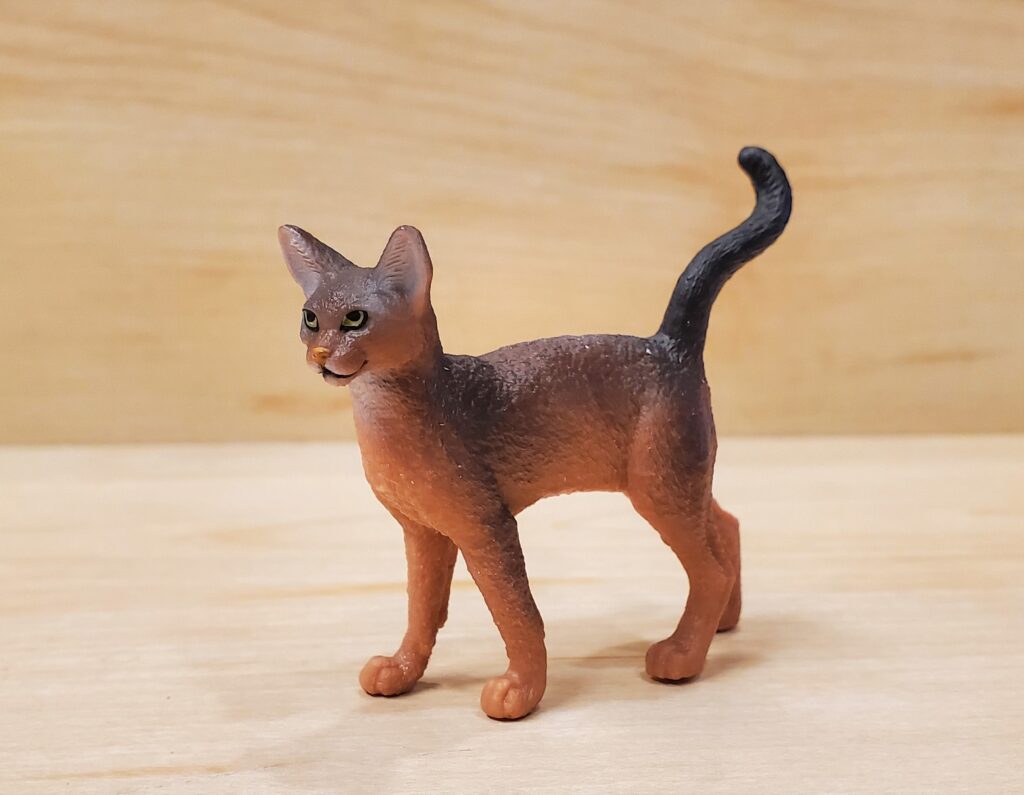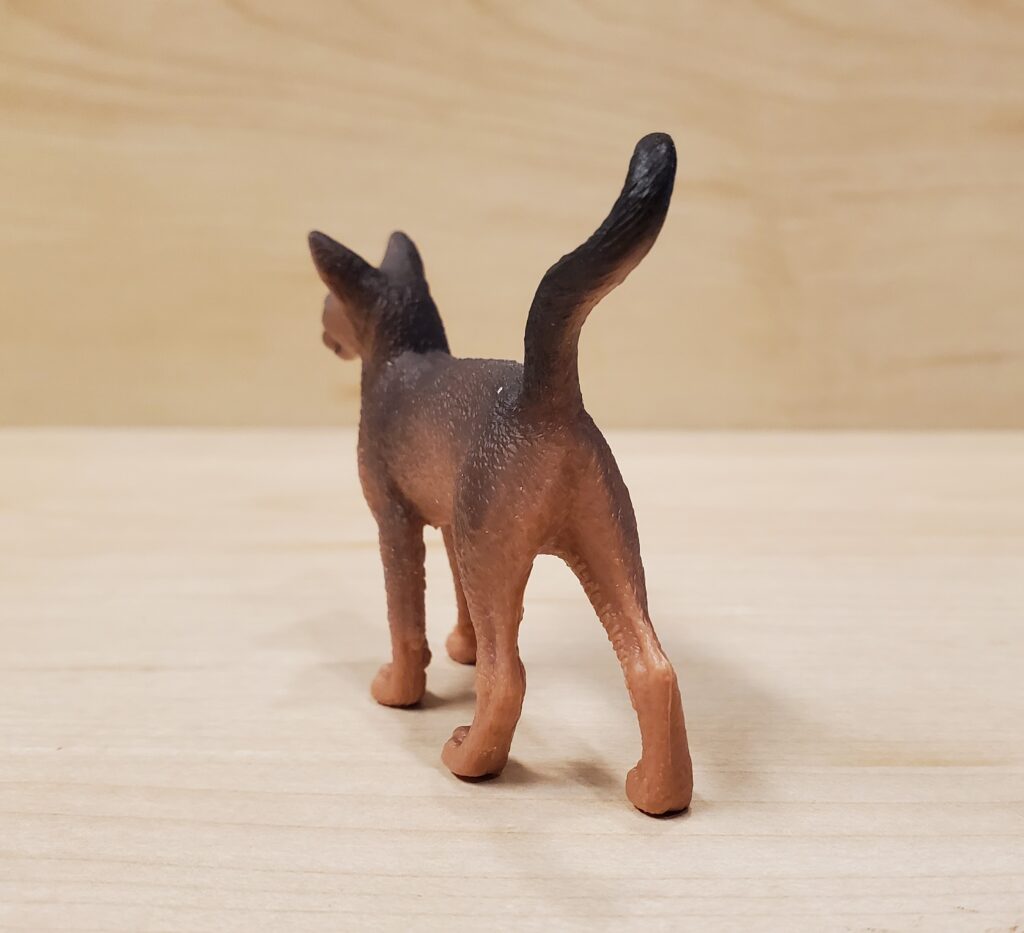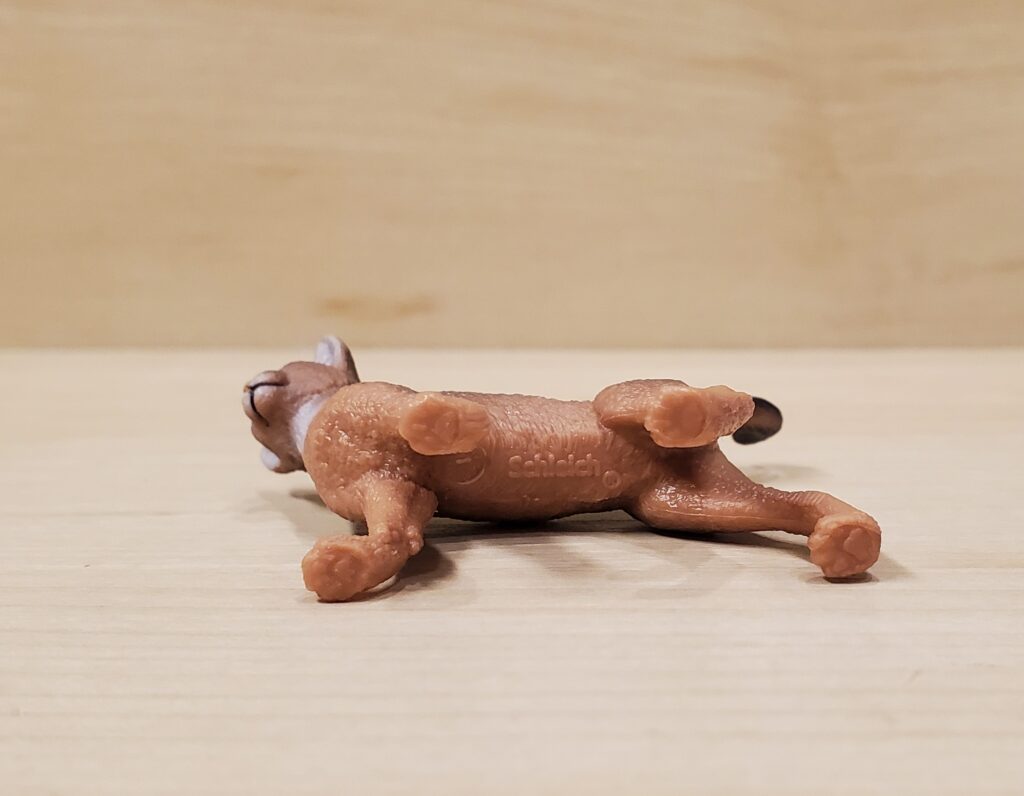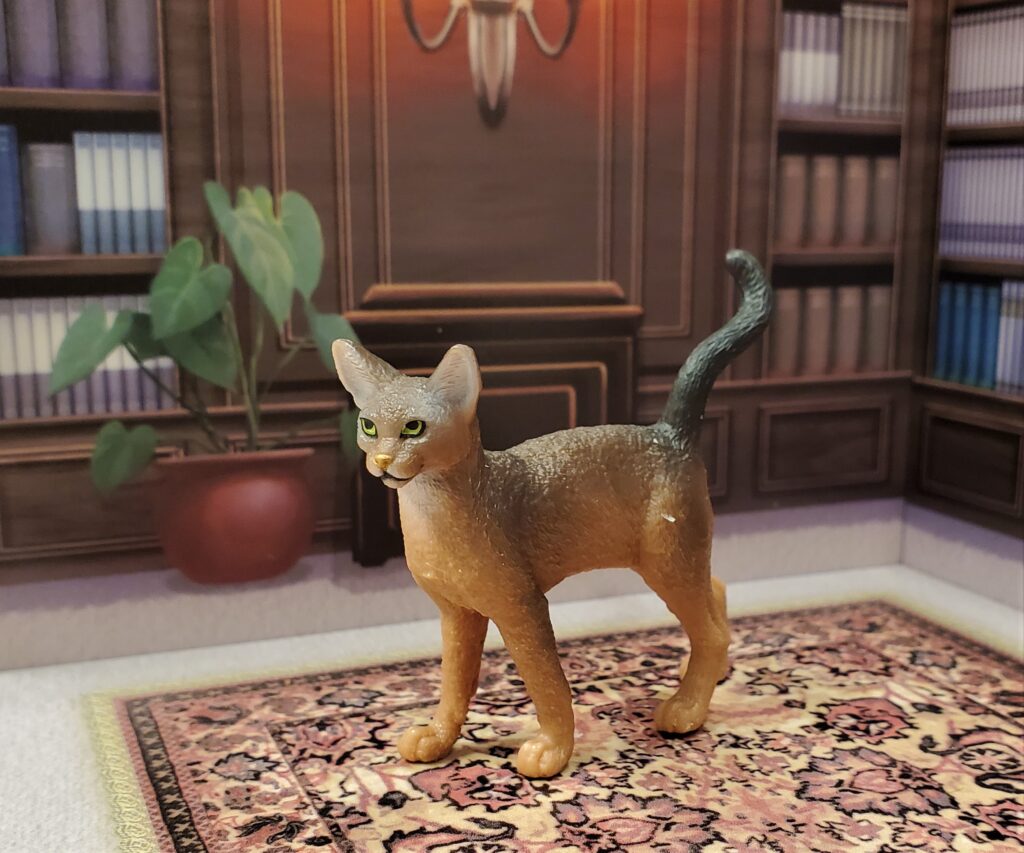Before we begin, I would again like to extend my thanks to Happy Hen Toys for donating this review sample for the Blog! Happy Hen Toys is a major distributor of animal figures and toys in the USA, and they sell products by Schleich, Papo, CollectA, PNSO, Safari Ltd., Mojö Fun, Breyer, Rebor, Eofauna, and Playmobil! I’ve been a regular customer of theirs for years, but it has really ramped up since I started the non-arthropod part of my collection in late 2018, and as such I can vouch for their excellent customer service. When Schleich first announced their 2023 line-up, I initially had today’s Abyssinian on my ‘wishes to purchase’ list. However, as CollectA and Papo announced more and more things I wanted, I took a conservative stance and removed it. Thanks to HHT for giving me the opportunity to acquire it after all!

Despite its name, the Abyssinian cat does not originate from Ethiopia (was was formerly known as Abyssinia). It is believed that it got that name from similar-looking cats that were exhibited in shows in England which were supposedly imported from Ethiopia after the end of the Italo-Ethiopian War in the late 1800s. However, it is now believed that those early ‘Abyssinians’ were the result of mixing various silver and brown tabbies with British Bunny cats. Based on genetic studies, the origin of the true Abyssinian appears to be coastal eastern India or Southeast Asia. The modern concept of the breed was refined in England; its introduction to that country could have been the result of Dutch and English colonists and merchants stopping in Kolkata, which was a major port at the time for the Indian Ocean. The Abyssinian was introduced to North America from England in the early 1900s, but it wasn’t until the 1930s that the quality of the imports was good enough to form the foundation of today’s American breeding programs.

The toy is a good size for a domestic cat, measuring 3.2 cm at the shoulder. This should put it at a scale of approximately 1:6.25-1:7.8 for an adult cat. The sex cannot be determined from the sculpt.

For my analysis of this figure, I used the standards as defined by the Cat Fanciers’ Association (CFA) of the United States. For starters, let’s look at the color. According to the CFA, there are four colors of Abyssinian: ruddy, cinnamon, blue, and fawn. This figure appears to be a traditional ruddy, with a burnt-sienna color. Abyssinians should have a ticked coat, meaning there should be little or no indication of striping or spotting, although the ruddy form may have subtle black ticking. There is a subtle white patch under the throat, which is fine (a well-demarcated white locket would be a disqualifying feature in a show). The paw pads are not painted, which is accurate for this breed; the paw pads of Abyssinians are generally concolorous with the rest of the foot. Ideally, there should be a dark tip to the end of the tail, but on this figure the entire tail is slightly darker than the rest of the body.

The CFA states the body should be ‘long, lithe, and graceful, but showing well-developed muscular strength’. These features are present in the figure. The head is also the correct shape, being a slightly rounded wedge, but with a muzzle that is not sharply pointed nor squared. The ears are large, alert, and pointed. The legs are a good length and the paws are a correct shape, but I am having trouble figuring out the number of toes. A true Abyssinian should have five toes on the front paws and four on the back. This figure appears to have five toes on the front paws, if the dewclaw counts as a toe! Otherwise, an incorrect number of toes is an automatic disqualification in show.

The eyes are large, almond-shaped, and green, as they should be. Eyes can also be gold colored. The one thing I don’t like about this figure is the way the eyes are painted. The pupils are painted as if the cat is slyly looking up at something (maybe waiting for their owner to feed them or a scratch behind the ears?); it’s probably just an issue with the figure I have. I’d personally prefer a more standard stare, looking forward, but it’s a very minor issue for me.

As I tick off qualifications of the breed on the CFA website and compare with images online, I have come to the conclusion that this is a very well-made Abyssinian cat. Kudos to Schleich (especially after that abomination they called a Bengal from 2021…). At the time of this writing, Toy Animal Wiki has eight other figures representing the Abyssinian, and none of them come close to today’s by Schleich! I only have three domestic cat toys, but if you want an Abyssinian in your collection, today’s comes highly recommended. The 2023 Schleich Abyssinian is available in the United States from Happy Hen Toys, here.
Disclaimer: links to Ebay and Amazon on the AnimalToyBlog are affiliate links, so we make a small commission if you use them. Thanks for supporting us!





I’m usually not thrilled with domestic cat figures but this one is really good. This reminds me that my daughter has the Safari cat TOOB, I should review it.
that would be purrrrfect 🙂
I am fairly picky with domestic cat figures, as I am with dogs. Outside of Japan, I don’t think most domestic cat figures hold up to the quality of a lot of the dog figures made by the same company. Maybe because dogs are so much more variable in their size, shape, coat length, tail length, etc. that more effort goes into them (?). Or maybe because dogs are more popular (although cat collectors have their own niche, that’s for sure)? It’s easy for a company to make a generic cat and just paint it different colors to represent calico vs. tabby vs….
If you wanna see some nice domestic cat figures by Kitan Club in the Art in the Pocket Series (https://toyanimalwiki.mywikis.wiki/wiki/Kitan_Club_ART_IN_THE_POCKET_5_-_Cats_of_Osamu_Moriguchi). I have one of the four in that link.
Thank you for sharing. Nice information.